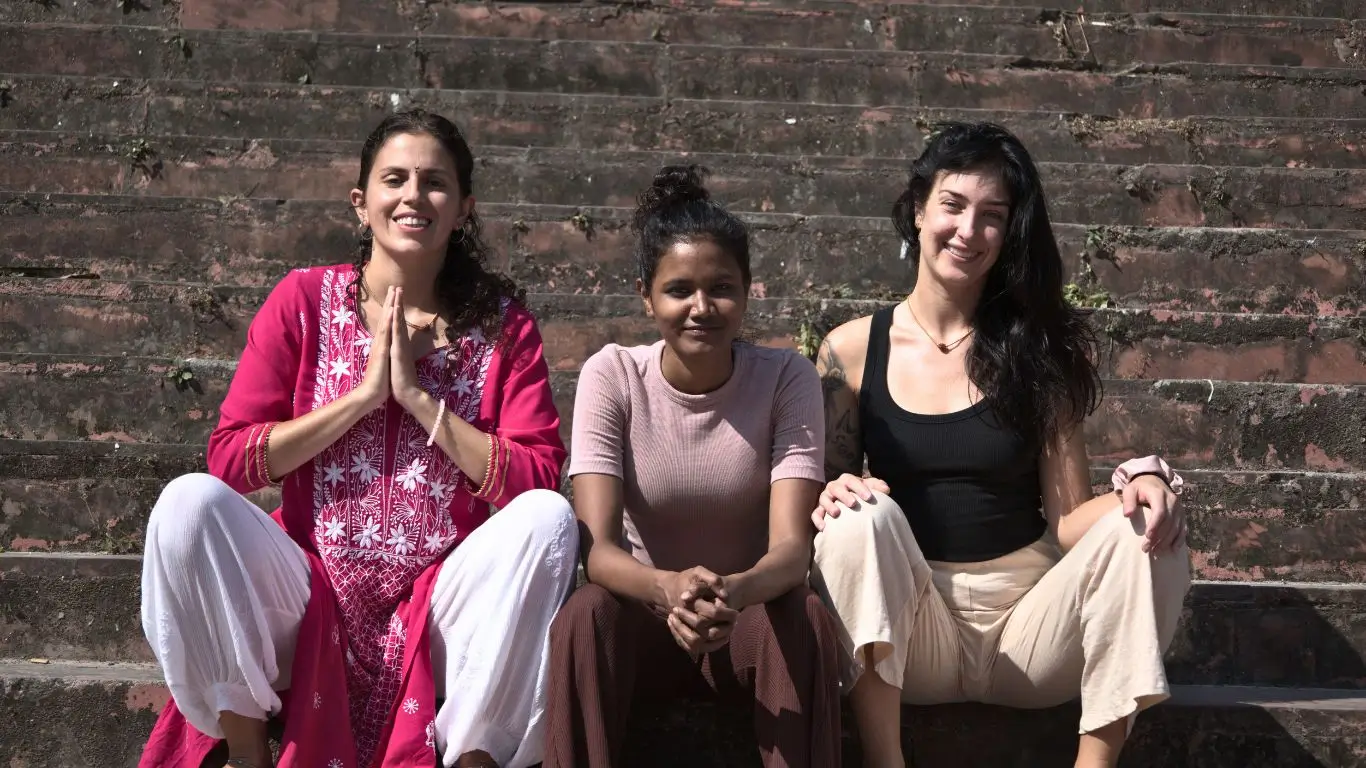
Sarvangasana (Shoulder Stand): Benefits, Steps, and Precautions
What is Sarvangasana (Shoulder Stand)?
Sarvangasana, also known as Shoulder Stand, is an inverted yoga pose where the body is balanced on the shoulders with legs extended upward. Known as the “Queen of Asanas,” it engages the entire body, offering numerous physical and mental health benefits. This Hatha yoga pose, derived from the Sanskrit words “sarva” (all), “anga” (limb), and “asana” (pose), is celebrated for its holistic impact on wellness.
Benefits of Sarvangasana
Sarvangasana provides a range of benefits, supported by both traditional yoga practices and emerging scientific research. Here are the key advantages:
Improved Blood Circulation: By inverting the body, Sarvangasana promotes venous return, enhancing blood flow to the head, neck, and upper body. This may benefit the heart, brain, and thyroid gland, improving oxygen and nutrient delivery (Tata AIG).
Nervous System Health: The pose stimulates the parasympathetic nervous system, promoting relaxation and potentially reducing stress and anxiety. Studies suggest inversion poses can improve heart rate variability, supporting heart health (Fitpass).
Strengthens Muscles: Sarvangasana engages the core (abdominals and obliques), shoulders, arms, and legs, building strength and stability. It also stretches the neck and upper spine, enhancing flexibility.
Relief from Various Conditions: It may alleviate symptoms of constipation, headaches, insomnia, and respiratory issues like asthma by stimulating abdominal organs and improving circulation.
Improved Digestive Health: The inversion stimulates abdominal organs, potentially relieving constipation and supporting digestive function.
Hormonal Balance: Sarvangasana is believed to influence the thyroid gland, which regulates metabolism. A 2024 systematic review found that yoga, including poses like Sarvangasana, can improve thyroid hormone levels in hypothyroidism (PMC).
Enhanced Lung Capacity: Emerging research indicates that inversion poses may strengthen respiratory muscles, improving lung capacity (Fitpass).
Reproductive Health: The gentle compression of the abdominal region may support hormonal balance and reproductive function, though more research is needed.
Scientific Evidence Supporting Sarvangasana
Scientific studies provide evidence for Sarvangasana’s benefits, particularly for thyroid health. A 2024 systematic review of 11 studies with 516 participants found that yoga interventions, including asanas like Sarvangasana, significantly reduced TSH levels and improved T4 levels in individuals with hypothyroidism. The review also noted improvements in lipid profiles, BMI, and mental health outcomes like reduced anxiety and depression (PMC).
Another study highlighted yoga’s role in reducing stress, which is linked to thyroid dysfunction (Medical News Today). While yoga is a complementary therapy and not a cure, these findings underscore Sarvangasana’s potential to support overall wellness.
How to Do Sarvangasana (Shoulder Stand)
Follow these steps to perform Sarvangasana safely and effectively:
Preparation: Lie flat on a yoga mat with legs together and arms by your sides, palms facing down. Place a folded blanket under your shoulders to support your neck if needed.
Lifting the Legs: Inhale deeply and engage your core to lift your legs to a 90-degree angle.
Supporting the Back: Place your hands on your lower back for support, with elbows on the ground. Lift your hips and back off the floor, bringing your legs over your head.
Aligning the Body: Straighten your spine and legs, pointing your toes toward the ceiling. Your body should form a straight line from shoulders to feet.
Holding the Pose: Breathe steadily and hold for 15–30 seconds (beginners) or up to 1–2 minutes as comfortable. Focus on deep, even breaths to enhance relaxation.
Releasing the Pose: Slowly lower your legs over your head, then gently roll your spine down to the mat, one vertebra at a time.
Tips for Success:
Alignment: Ensure weight is on your shoulders, not your neck, to avoid strain.
Breathing: Maintain steady, deep breaths to promote relaxation and oxygen flow.
Duration: Beginners should start with shorter holds and gradually increase as strength improves.
Modifications: Use a wall for support or practice a half-shoulder stand for beginners.
Common Mistakes to Avoid
To maximize benefits and minimize risks, avoid these common errors:
Straining the Neck: Do not put weight on your neck. Use a blanket for support and keep your neck neutral.
Incorrect Hand Placement: Position hands on your lower back with fingers pointing upward for proper support.
Losing Balance: Engage your core and keep legs straight and together to maintain stability.
Rushing the Pose: Move slowly and mindfully to prevent injury.
Precautions
Sarvangasana is an advanced pose and requires caution:
Consult a Doctor: Individuals with high blood pressure, glaucoma, thyroid issues, neck or shoulder injuries, or heart conditions should consult a healthcare professional before attempting Sarvangasana (Yoga Point).
Avoid During Menstruation: Some yoga instructors advise against inversions during menstruation, though evidence is mixed (Arhanta Yoga).
Listen to Your Body: Stop immediately if you feel pain or discomfort. Practice under the guidance of a qualified yoga instructor, especially if new to the pose.
Contraindications: Avoid if pregnant, or if you have conditions like hernia, acid reflux, or cervical spondylitis.
Sarvangasana for Yoga Teachers
If you’re pursuing 200-hour yoga teacher training in Rishikesh India, Sarvangasana will likely be an essential part of your practice. Understanding how to teach this posture safely and effectively is important for your future students, as it is a powerful yet advanced asana.
Tips for Teaching Sarvangasana:
- Focus on Alignment: Ensure your students align their body in a straight line from the shoulders to the feet. Proper alignment is key to avoiding strain on the neck and back.
- Provide Support: Beginners may find it difficult to lift their legs or maintain the pose for long periods. Encourage them to use a block under their shoulders or a cushion for added support if needed.
- Breathe Deeply: Remind students to breathe deeply and consistently throughout the pose to maintain a calm and steady focus.
For those undergoing 200-hour yoga teacher training in Rishikesh India, learning how to teach this asana effectively will help you guide your students toward a deeper understanding of their bodies and minds.
History and Origin of Sarvangasana
Sarvangasana is a traditional Hatha yoga pose with roots in ancient yoga texts. Described in T. Krishnamacharya’s Yoga Makaranda (1934), it is a variant of Viparita Karani, a medieval yoga pose. In 1924, yoga researcher Sri Kuvalayananda prescribed Sarvangasana to Mahatma Gandhi for high blood pressure, highlighting its historical therapeutic use (Classic Yoga).
Frequently Asked Questions
What is Sarvangasana?
Sarvangasana, or Shoulder Stand, is an inverted yoga pose where the body is balanced on the shoulders with legs extended upward, known for its full-body benefits.What are the benefits of Sarvangasana?
It improves circulation, strengthens muscles, supports thyroid function, reduces stress, and may alleviate conditions like constipation and insomnia.How do I perform Sarvangasana correctly?
Follow the step-by-step instructions above, ensuring proper alignment and support. Practice with a qualified instructor for safety.Who should avoid Sarvangasana?
Avoid if you have high blood pressure, neck injuries, glaucoma, or are pregnant. Consult a doctor if unsure.Can Sarvangasana help with thyroid issues?
Research suggests yoga poses like Sarvangasana may improve thyroid function, particularly for hypothyroidism, but it’s not a cure (PMC).
Conclusion
Sarvangasana, the “Queen of Asanas,” offers a wealth of benefits for physical and mental health when practiced correctly. By incorporating this pose into your yoga routine under proper guidance, you can enhance circulation, strengthen muscles, and support thyroid health. Always prioritize safety and consult professionals if you have health concerns.




